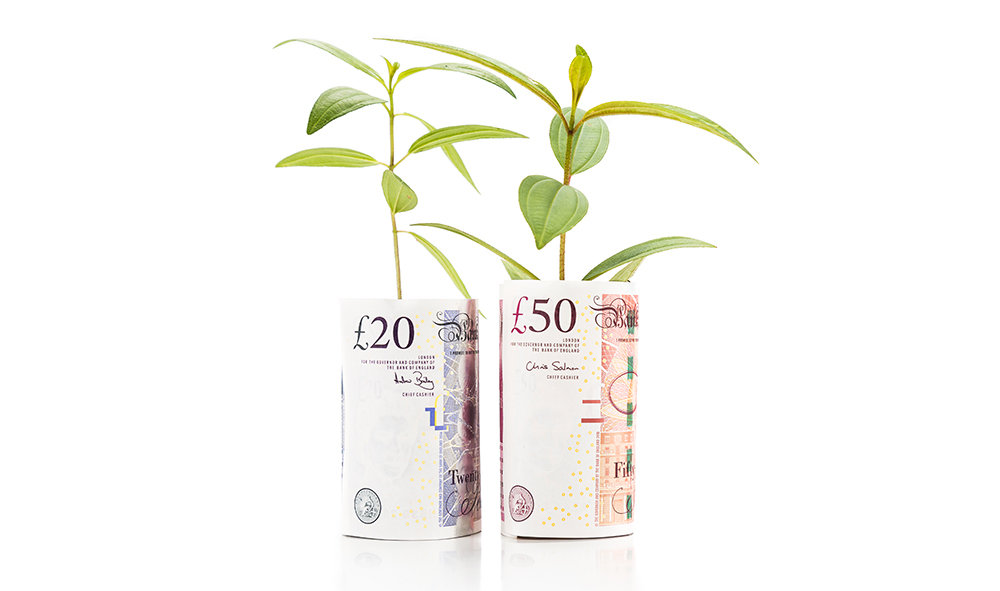With global attempts being made to reduce the ecological footprint, central banks’ approach to banknotes is becoming increasingly important. Whilst the vast majority of central banks, 95% to be precise, rely on cotton-based banknotes, the remaining 5% are made from other substrates, including plastic. Although plastic is said to be somewhat more durable, it is by no means sustainable. Therefore, the call for sustainability in the cash industry is becoming ever louder. However, with respect to banknote production, central banks must address the challenge of striking an optimum balance between eco-friendliness, durability – and most importantly – security.
The impact of plastic banknotes
Over the years much have been discussed about the impact of plastic on the environment, with striking images and news of it harming animal and human health. In fact, past research revealed that plastic banknotes are distinctively worse for the planet than cotton-based as they have a high carbon footprint and increase permanent waste at the end-of-life cycle. According to statistics, between 1950 and 2015, more than 8.3 billion tonnes of plastic were produced worldwide. Not even 10% of this was recycled.
The negative environmental impact is also exacerbated by the ongoing problem of counterfeiting plastic banknotes, evident in relevant markets and countries. Since their introduction, the number of counterfeit notes on the streets has increased, presenting a major threat not only to the environment but also to our society and economies. But according to ECB, counterfeiting rates of cotton-based euro are now at their lowest level since its introduction, proving the embedded security in the cotton substrate is harder to forge.
Why are cotton banknotes more sustainable?
As a plant, cotton certainly impresses with its sustainable efficiency and negative carbon footprint. All crops produce greenhouse gases during production, including cotton, which emits 1.7 kilograms of carbon dioxide to produce one kilogram of fibre. However, in its leaves and soil, it binds 2.2 kilograms of the greenhouse gas, meaning it removes more CO2 from the atmosphere than it emits. In addition, as cotton fibres are almost pure cellulose, cotton is a very good biodegradable natural fibre.
Enhancing sustainability further, the cotton substrate of the banknotes is derived from cotton combings, a by-product from the textile industry as they do not have the qualitative properties required for textile production. For banknote production, the short fibres are an ideal high-quality raw material.
Although the standard (or “no label”) cotton production requires large amounts of water and fertiliser, there is an increased focus on the use of water and carbon-reducing solutions throughout the value chain, and on certified sources in purchasing. Organisations such as WWF have been working closely with farmers, buyers and government agencies to promote more ecologically and ethically sound cotton and use water more efficiently. Companies have been increasingly reusing water during the production process as well as purifying it to filter out any harmful substances before discharging it.
Ensuring security and durability
While sustainability is an increasingly important element of today’s banknotes, it mustn’t come as a compromise to security and durability. Currently, present innovations and exclusive high-tech processes allow for a hybrid solution, in which minimum quantities of plastic are used to raise the durability of cotton-based banknotes to a level comparable to a 100% polymer substrate.
An ultra-thin film of polymer protects a cotton core where all the important and sophisticated security features and machine-readable elements are embedded, including watermarks, threads, foils, see-through windows, or optically variable stripes. During the sheet formation process, all these security features can be inseparably bonded to the banknote paper, providing maximum protection against counterfeiting. When it comes to polymer banknotes, security elements are either printed or applied using processes and machines similar to those in the mass market, therefore, consequently making the notes easier for counterfeiters to appropriate. On the other hand, cotton-based notes have their security features fully embedded in the substrate, applied or printed. This provides confidence in the authenticity and stability of cash as a public good.
As cash continues to be an essential part of people’s freedom of choice of their means of payment, banknotes must first and foremost offer confidence in their security to minimise fraudulent activities. There are, however, growing pressures across all industries and supply chains to prioritise sustainability too, with banknote creation and disposal being no different. Today’s advanced processes and technology help achieve the optimum balance between durability, security and sustainability. They guarantee banknote longevity and the highest levels of security - all while helping the environment and reducing unnecessary plastic waste. That way people can continue to enjoy physical money, knowing that by making cash payments, they don’t contribute to the climate crisis.












